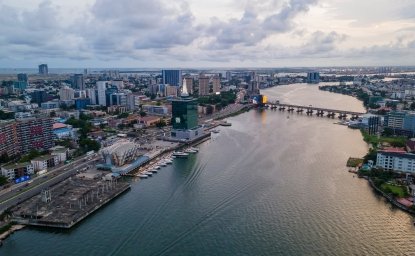Former Uruguayan President José Mujica once observed that Uruguay and Argentina “are not brother countries, we’re twins.” Their connections – from mate and tango to ranching and a distinctive accent – are historic and well-known. But after Argentina’s catastrophic default in 2001 and devaluation in 2002 bludgeoned Uruguay’s economy, a consensus emerged that the country needed to disentangle itself from Argentina’s crisis-prone economy.
The 2001 Argentine crisis led to a deep recession in Uruguay, with GDP down 7.1 percent in 2002. Throughout the year, authorities in Montevideo struggled to rescue the banking sector, which was overexposed to Argentine depositors. A last-minute loan from the Bush administration helped prevent default and financial collapse. As a result, beginning in 2005, Uruguay’s center-left Frente Amplio initiated an aggressive program to diversify the country’s trade profile and reduce its financial exposure to Argentina. Surprisingly, for a country of only 3.5 million people, it worked. By 2016, only 6 percent of Uruguay’s exports went to Argentina, compared to 13 percent in 2005. In that period, its exports to China ballooned from 4 percent to 17 percent, and trade with Brazil expanded significantly. Furthermore, Argentine deposits in Uruguayan banks now account for only 5 percent of the total, compared to 40 percent in 2002. As Danilo Astori, Uruguay’s economy minister, observed, “Estamos en una situación de diversificación importante.” Thanks to successful decoupling, he said, “Uruguay pueda mantener el orden macroeconómico que es fundamental para evitar oscilaciones desequilibrantes como las que vive el país vecino.”
Today, the economic crisis in Argentina is putting to the test Uruguay’s project to reorient its economy. On the other side of the Río de la Plata, Argentina is struggling to halt a run on the peso. Despite a $50 billion International Monetary Fund loan in June, Argentina’s country risk is the sixth highest in the world. The peso devaluation has led to higher inflation expectations, which have more than doubled since the beginning of the year, to 42 percent. The government expects a recession this year, with a projected GDP contraction of 2.4 percent.
Uruguayans are understandably preoccupied with contagion. Indeed, Argentina’s troubles will no doubt hurt Uruguay’s tourism sector, its largest source of foreign currency and a major employer. (Last year, as Argentina’s economy bounced back from the 2016 recession, a record number of Argentines – almost 2.7 million – visited Uruguay, lured by its sandy beaches, including Punta del Este.) Uruguay will also suffer from reduced Argentine investment in vacation homes in Uruguay, where an estimated 200,000 Argentines own property. To compensate for the unfavorable exchange rate, Uruguay will not charge tourists its 22 percent sales tax.
So far, however, it appears Uruguay has convinced markets it will weather the storm. The Uruguayan peso has seen a far shallower devaluation than the Argentine peso, so much so that for the first time, the Uruguayan peso is worth more than Argentina’s currency. Another measure of market confidence is country risk. So far, Uruguay’s country risk has remained stable; in fact, the IMF bailout seems to have helped Uruguay more than Argentina in restoring investor confidence. This resilience is no mystery. In addition to its diversified trade profile, Uruguay also benefits from ample central bank reserves and the availability of credit lines at international financial institutions, should its finances rapidly deteriorate. Its current account is another important factor. Last year, Uruguay recorded a current account surplus of 1.6 percent of GDP, compared to a 4.8 percent deficit in Argentina. “No hay posibilidades de una crisis financiera ni de ningún tipo,” President Tabaré Vázquez has concluded.
Though Argentina’s tumult will likely spare Uruguay, the country still faces challenges. Its budget deficit stands at 4 percent of GDP, and that could worsen in the run-up to next year’s presidential election, with the Frente Amplio, polling at the lowest level since Mr. Vázquez began his first term in 2005. Another problem is a sharp decline in employment since 2015; despite consistent economic growth, Uruguay’s labor market suffers from structural problems such as the strong peso (reducing export competitiveness), high salaries and automation. That said, unlike Argentina, Uruguay has earned the breathing room needed to address these challenges, without fear that its answers will involve populist policies that jeopardize its reputation and national accounts.
For more on Uruguay’s economy, listen to our recent podcast interview with Fitch Ratings’s Todd Martinez.
Author


Argentina Project
The Argentina Project is the premier institution for policy-relevant research on politics and economics in Argentina. Read more

Explore More
Browse Insights & Analysis
Understanding Trade Promotion Authority (TPA): Implications for US Trade

The Innovative Landscape of African Sovereign Wealth Funds

